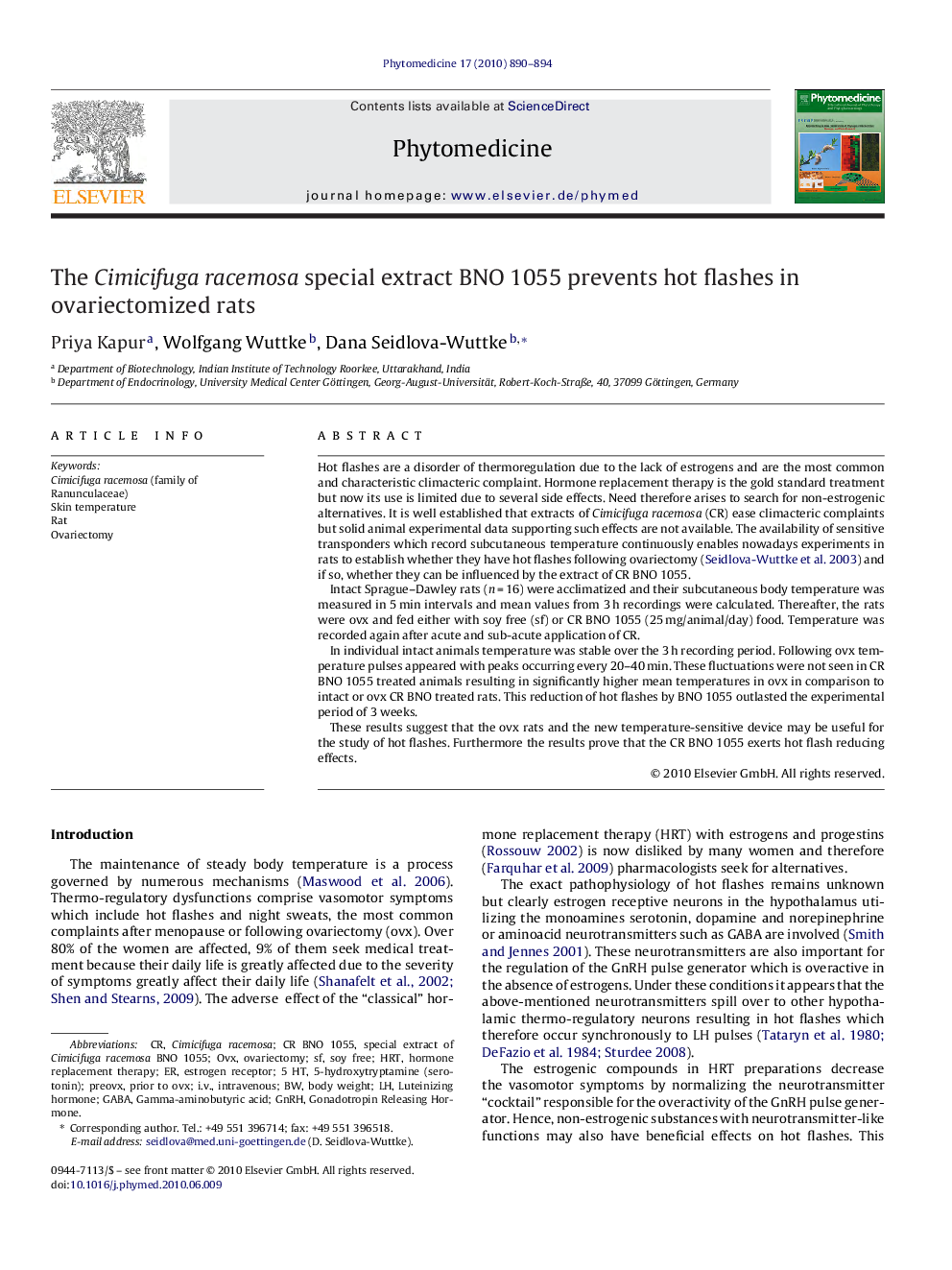| Article ID | Journal | Published Year | Pages | File Type |
|---|---|---|---|---|
| 2497263 | Phytomedicine | 2010 | 5 Pages |
Hot flashes are a disorder of thermoregulation due to the lack of estrogens and are the most common and characteristic climacteric complaint. Hormone replacement therapy is the gold standard treatment but now its use is limited due to several side effects. Need therefore arises to search for non-estrogenic alternatives. It is well established that extracts of Cimicifuga racemosa (CR) ease climacteric complaints but solid animal experimental data supporting such effects are not available. The availability of sensitive transponders which record subcutaneous temperature continuously enables nowadays experiments in rats to establish whether they have hot flashes following ovariectomy ( Seidlova-Wuttke et al. 2003) and if so, whether they can be influenced by the extract of CR BNO 1055.Intact Sprague–Dawley rats (n = 16) were acclimatized and their subcutaneous body temperature was measured in 5 min intervals and mean values from 3 h recordings were calculated. Thereafter, the rats were ovx and fed either with soy free (sf) or CR BNO 1055 (25 mg/animal/day) food. Temperature was recorded again after acute and sub-acute application of CR.In individual intact animals temperature was stable over the 3 h recording period. Following ovx temperature pulses appeared with peaks occurring every 20–40 min. These fluctuations were not seen in CR BNO 1055 treated animals resulting in significantly higher mean temperatures in ovx in comparison to intact or ovx CR BNO treated rats. This reduction of hot flashes by BNO 1055 outlasted the experimental period of 3 weeks.These results suggest that the ovx rats and the new temperature-sensitive device may be useful for the study of hot flashes. Furthermore the results prove that the CR BNO 1055 exerts hot flash reducing effects.
